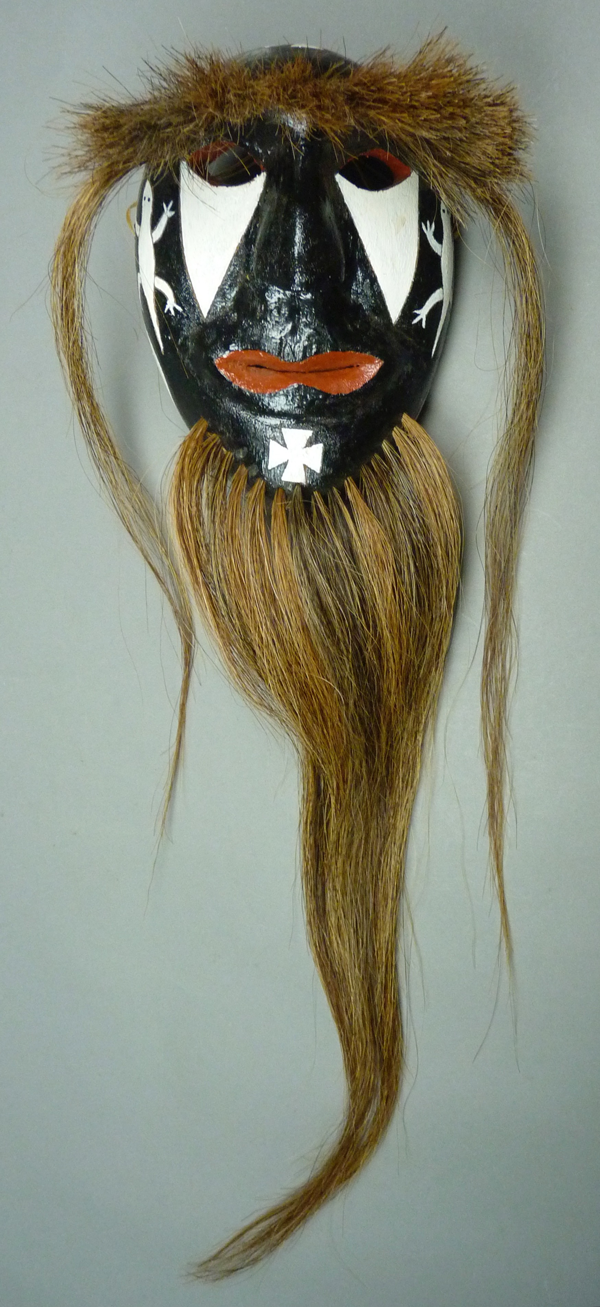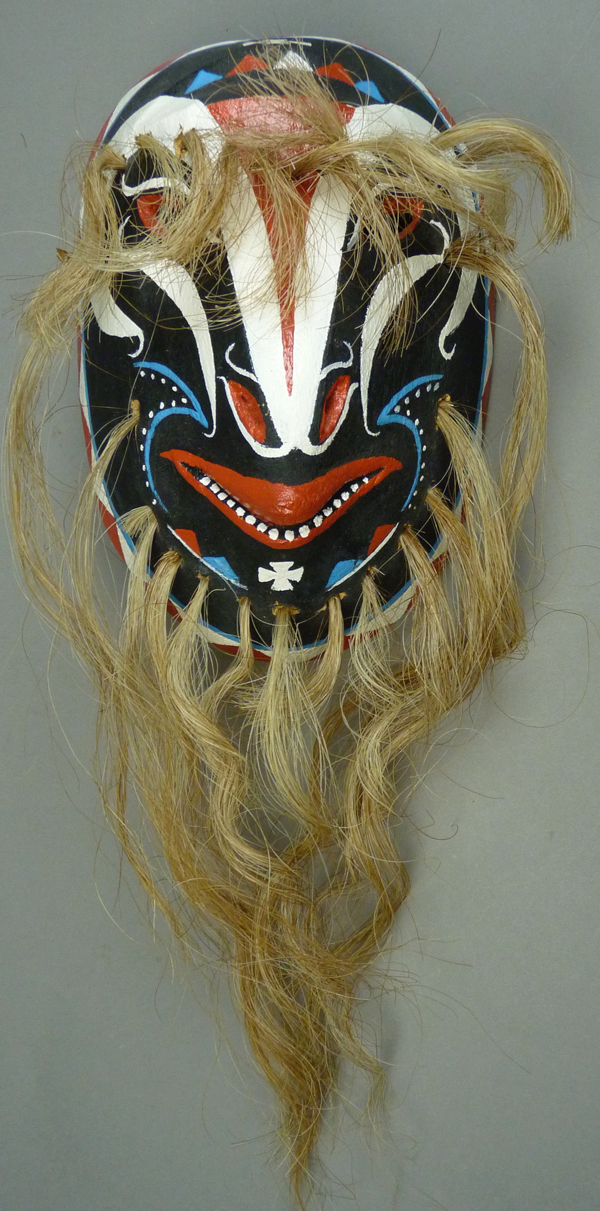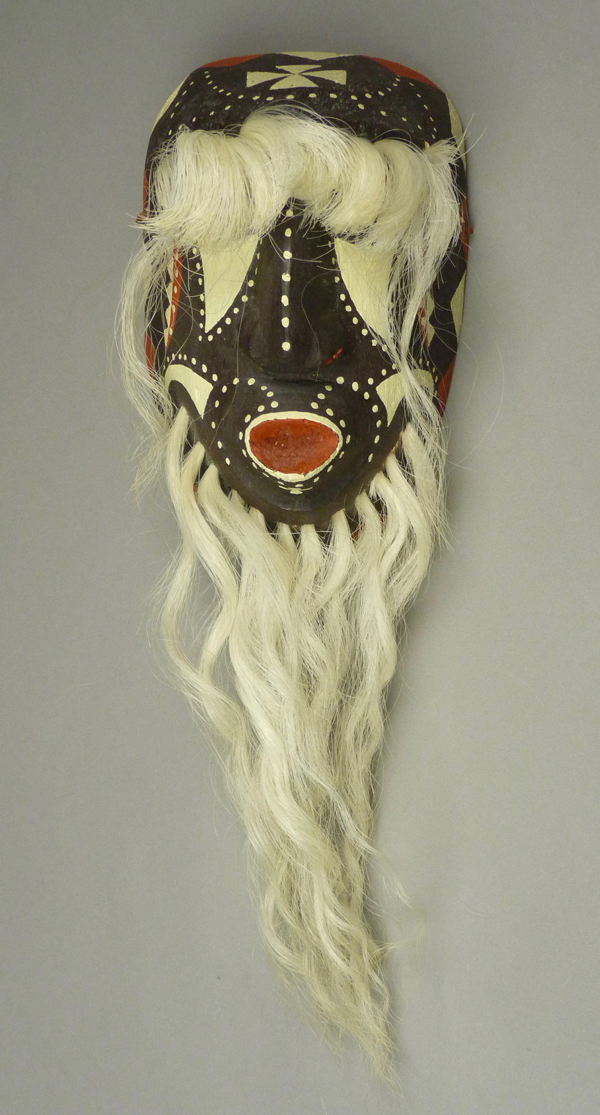Today I will introduce you to the Pascola masks of Crisencio Molina Maldonado. Crisencio was born on 9/19/1957, in Pitahaya, Sonora. Presently he lives in Potam. As a young man, he was trained by his father to perform as one of the deer singers during Yaqui fiestas. His father, whose informal name is Miki Maaso, was the lead Deer singer and Miki’s compadre, Luis Maaso, was the Deer dancer they sang for, when this group traveled from Sonara to participate in Tucson fiestas at the Barrio Libre community. Later they performed at Old Pascua. Some anthropologists recognized Crisencio as a valuable cultural consultant. In about 2004, my friend Tom Kolaz was pleasantly surprised to discover that Crisencio was also a talented mask maker. At that time Cresencio brought his masks with him when he attended Tucson fiestas, and I began buying his masks from Tucson merchants in 2006. Tom and I thought that Crisencio’s masks were very well carved, and that he was a superlative artist, so we began buying directly from the carver. In a series of posts over the coming weeks I will demonstrate the quality that so impressed us.
Upon my discovery of Crisencio, I purchased a number of his masks, including those with the most traditional Pascola mask style, masks with human faces. Here is one of those.
This one has a beak-style mouth, a feature that is found in masks from the beginning of the 20th century.




